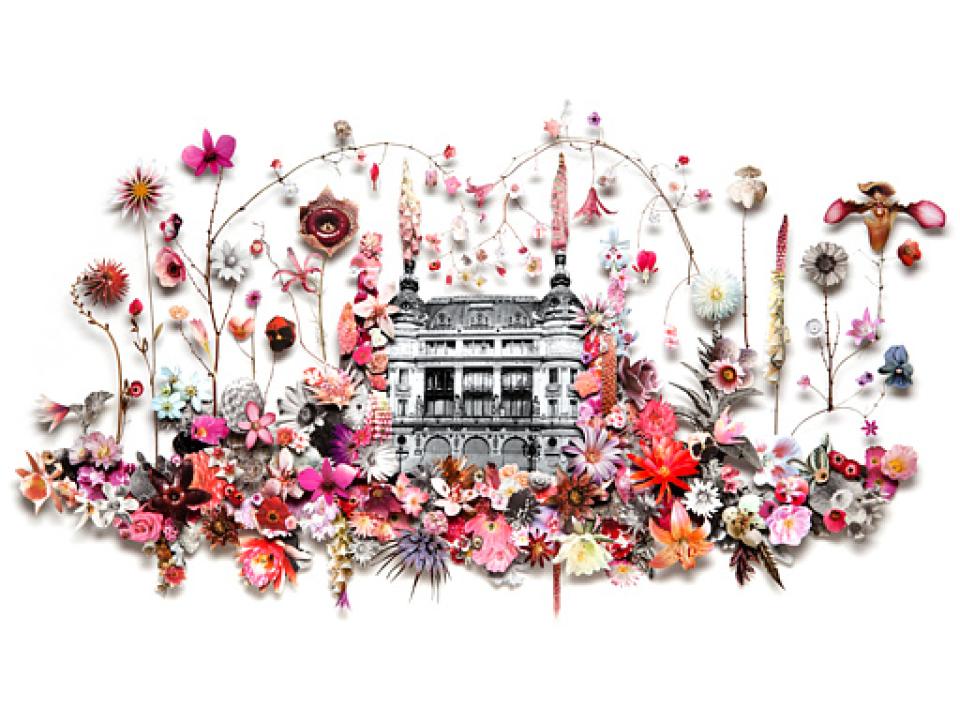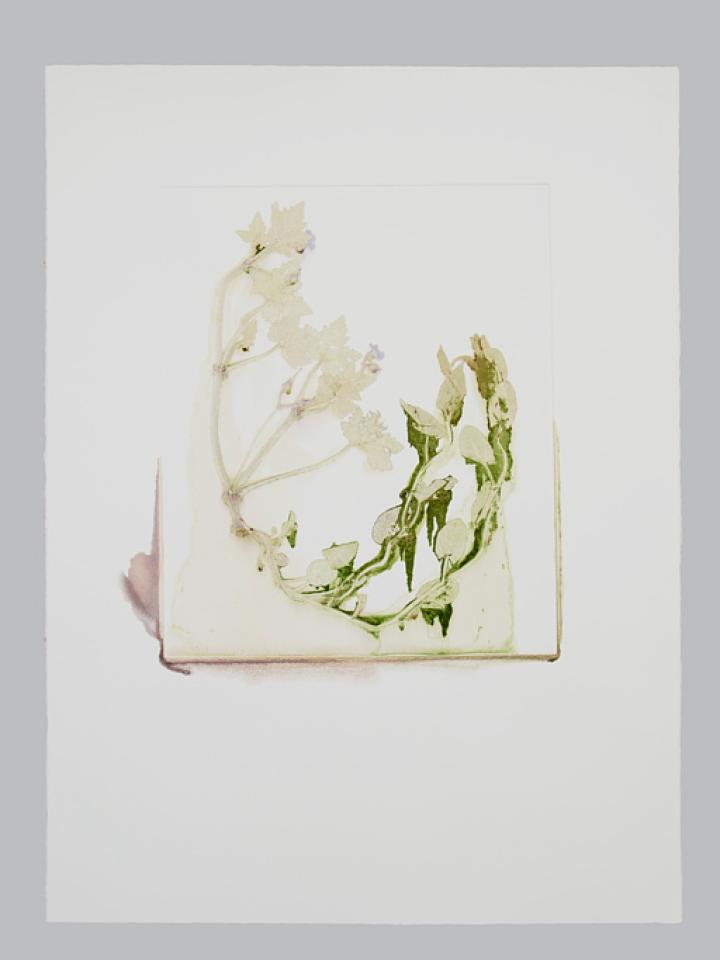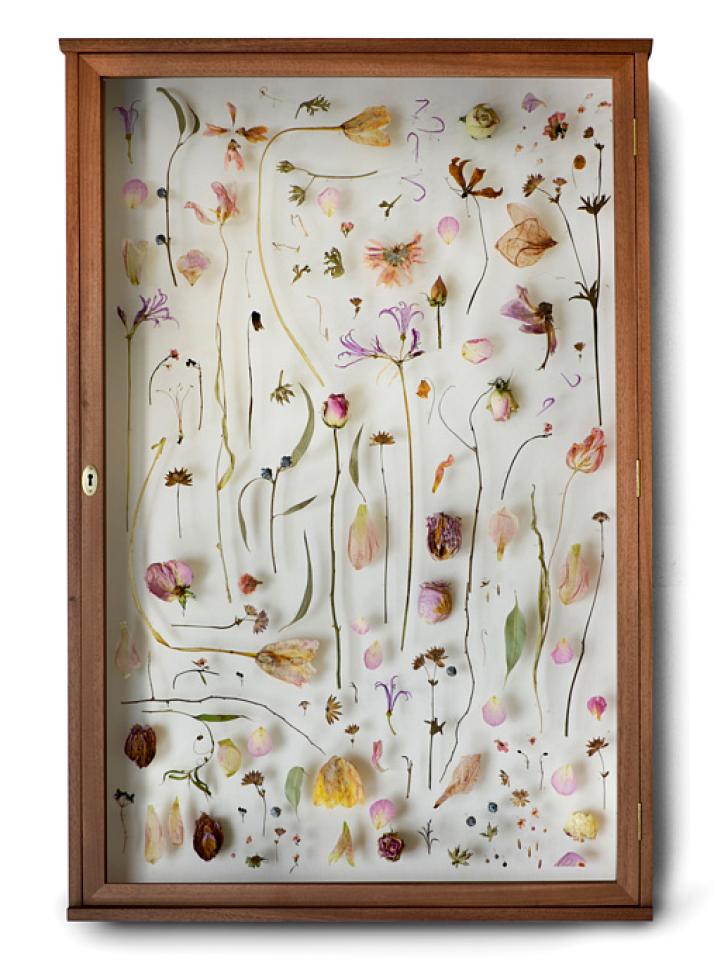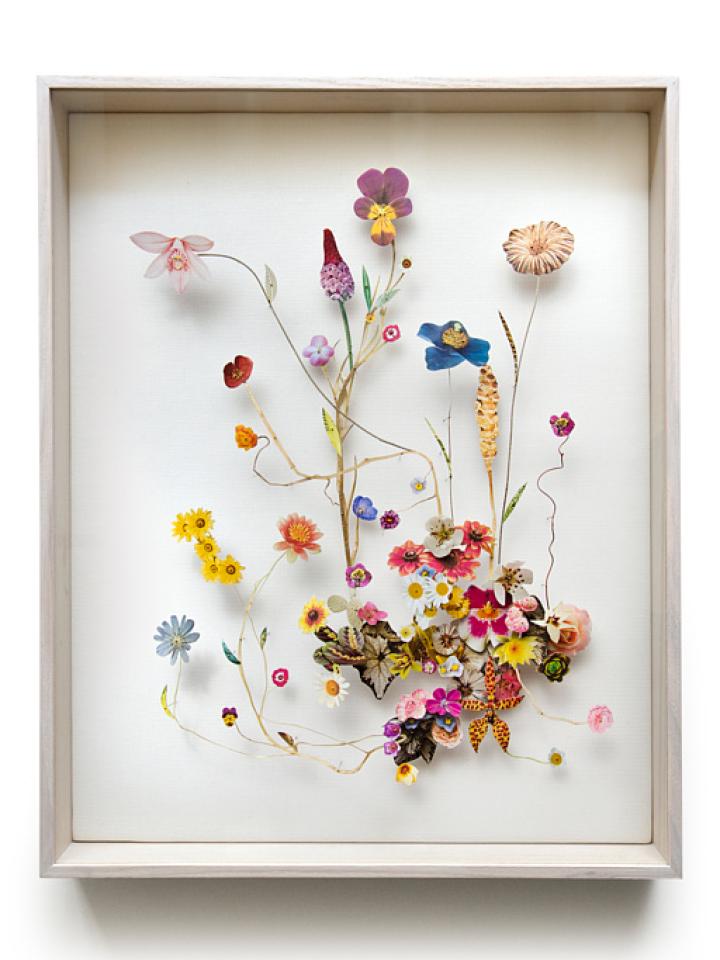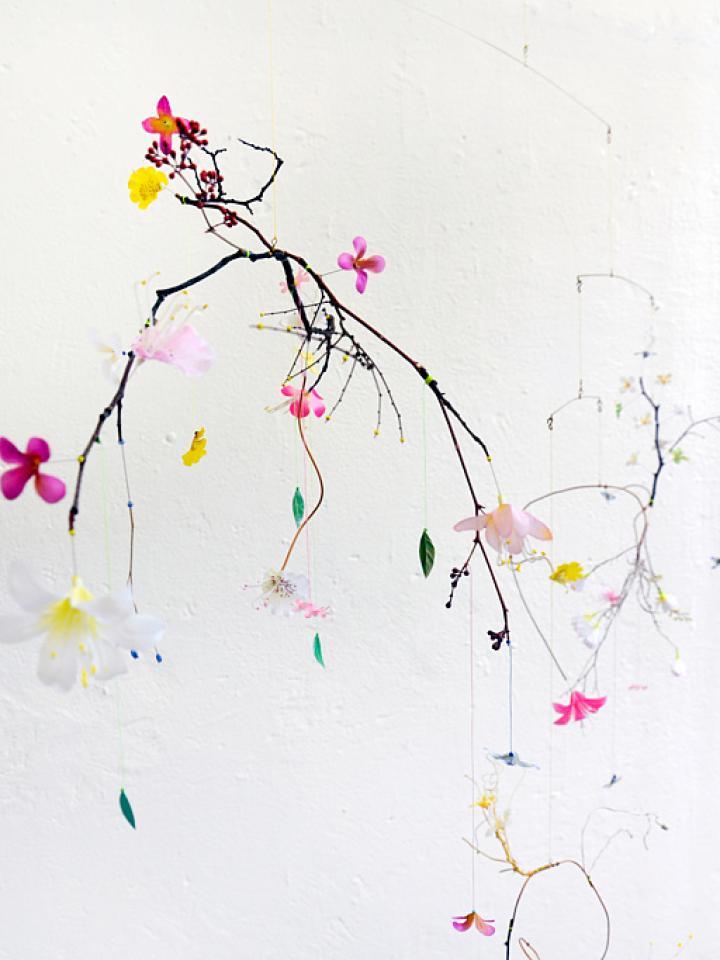Flower constructions
Usually, when we see flowers framed and displayed behind glass they are two-dimensional but Ten Donkelaar has taken the concept of the flattened pressed flower and transformed it into a three-dimensional work with the clever use of pins.
“The flower constructions are three-dimensional collages from pressed flowers and cut out flower pictures. Each element is meticulously placed on pins, which creates the depth. Some of them are like a fantasy Herbaria, filled with dried flowers or branches, with irregular shapes and sophisticated twists and some refer to planets.”
The result is a fairytale-like magical landscape – the kind of thing you would expect to see down the rabbit hole in Alice’s Wonderland.
Flower pigments
At first glance, the ‘flower pigments’ look like a collection of dreamy, abstracted watercolour paintings of flowers – as though the artist had dripped the paint onto a damp page.
But in fact these beautiful images are made from real flowers and their natural colour pigments and created by putting the flowers through an etching press.
“What happens is that the flowers leave the colors and the structure behind on the paper,” explains Ten Donkelaar.
Why try to replicate nature when the real thing has so much to offer?

